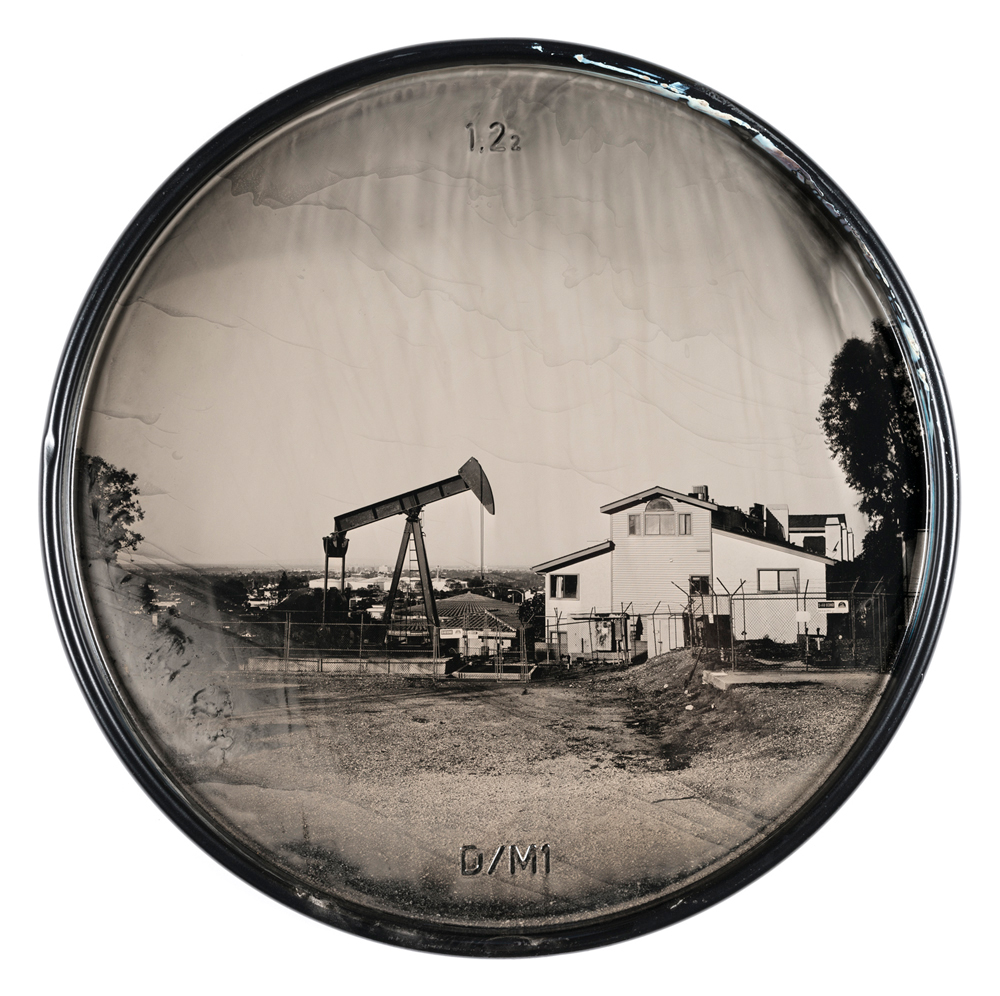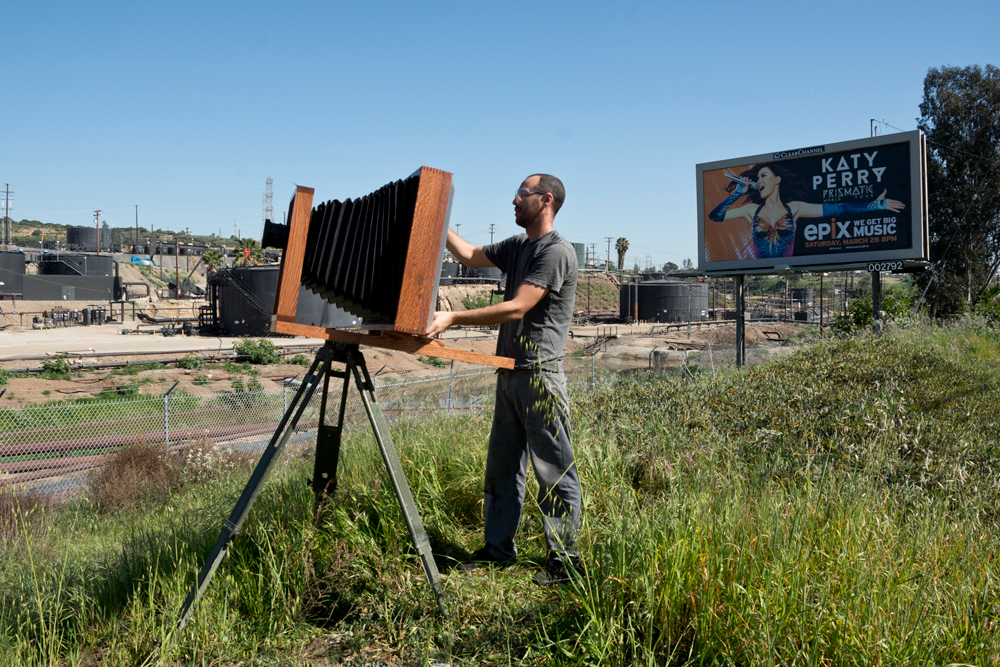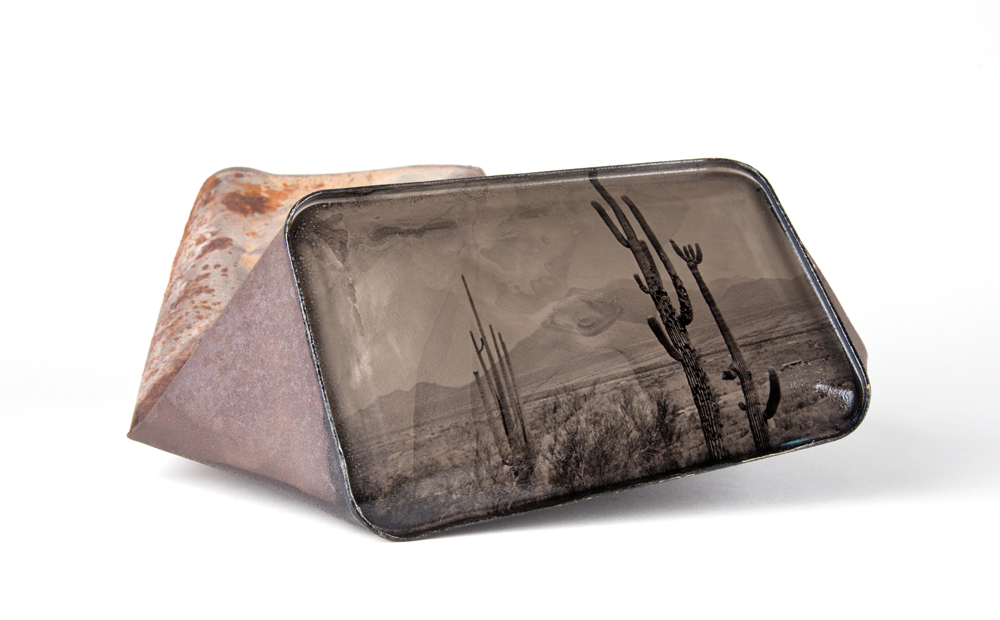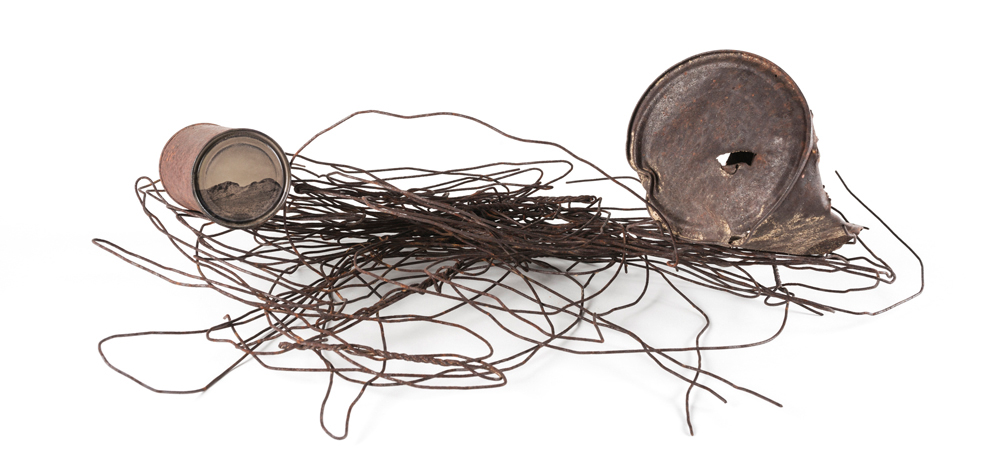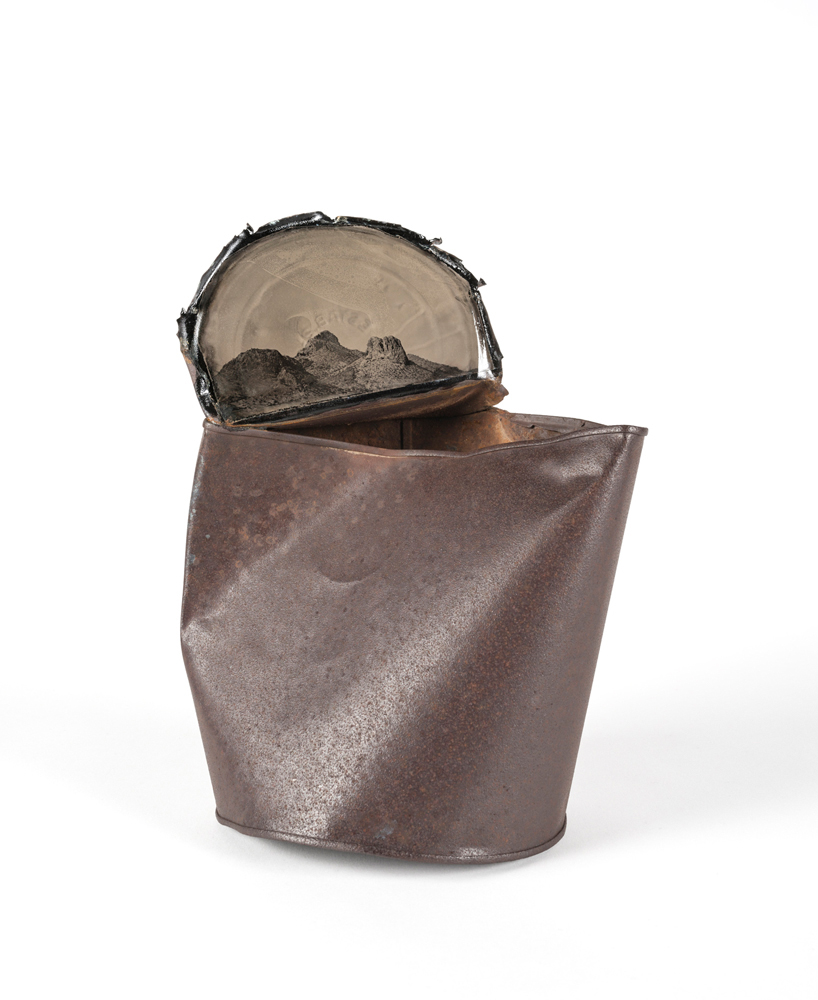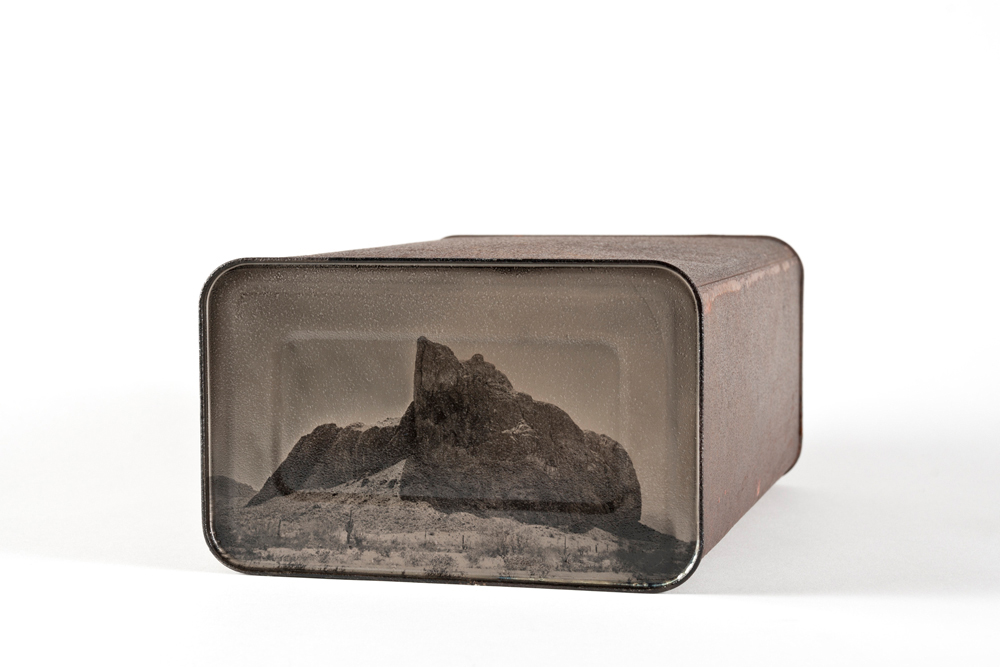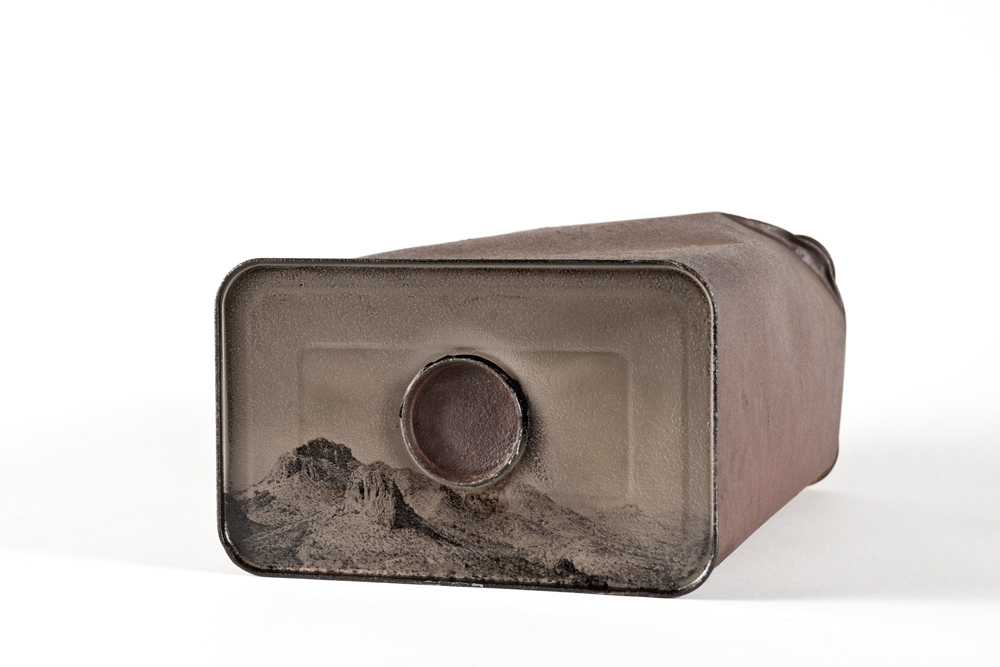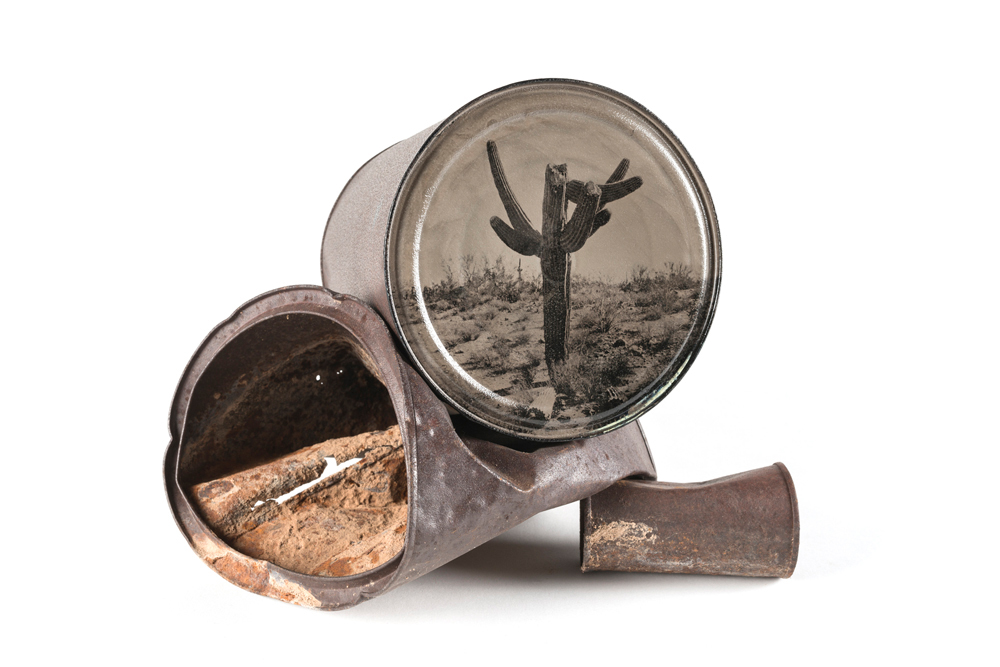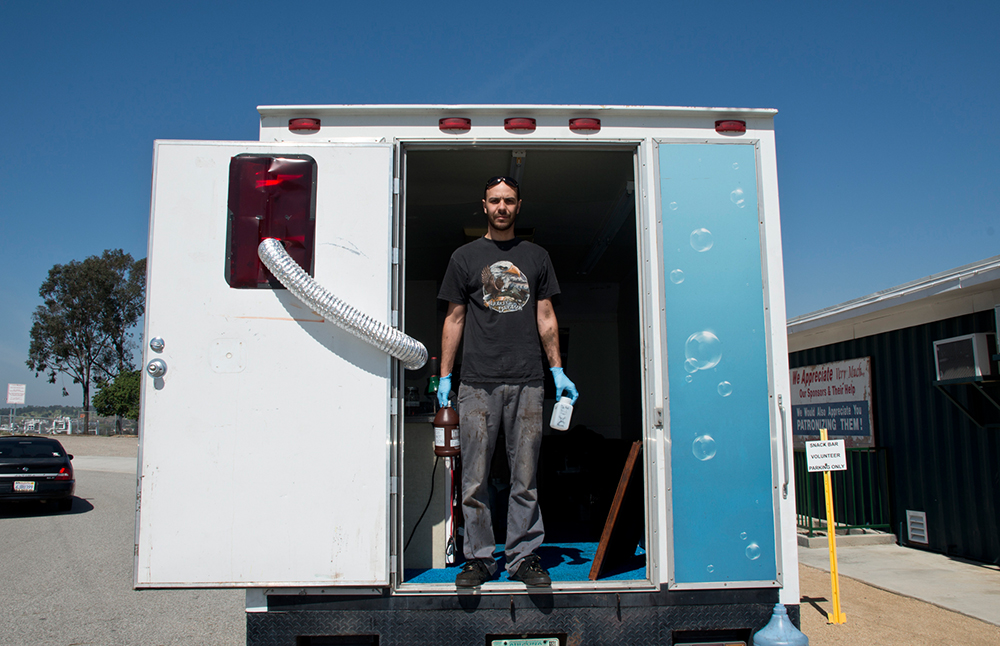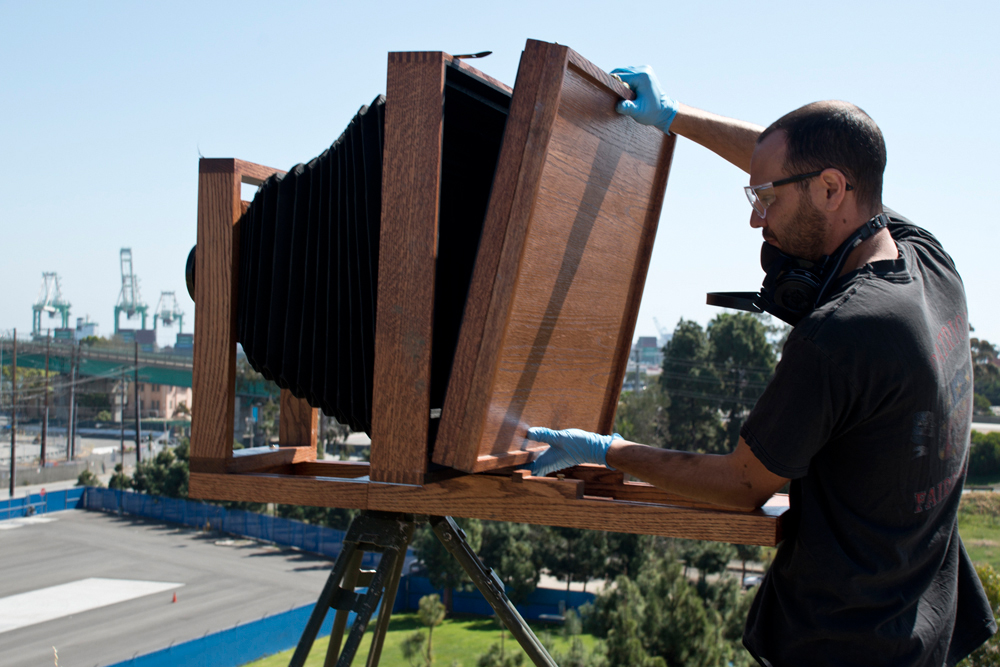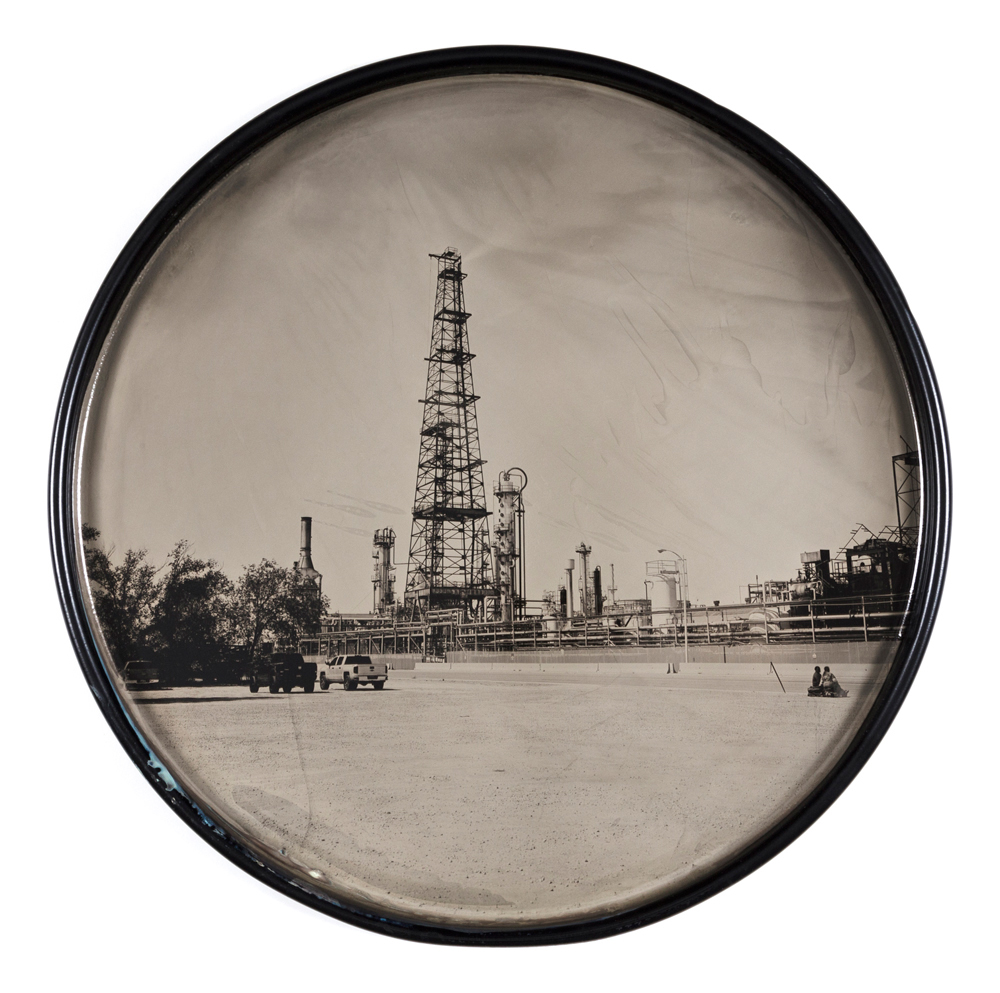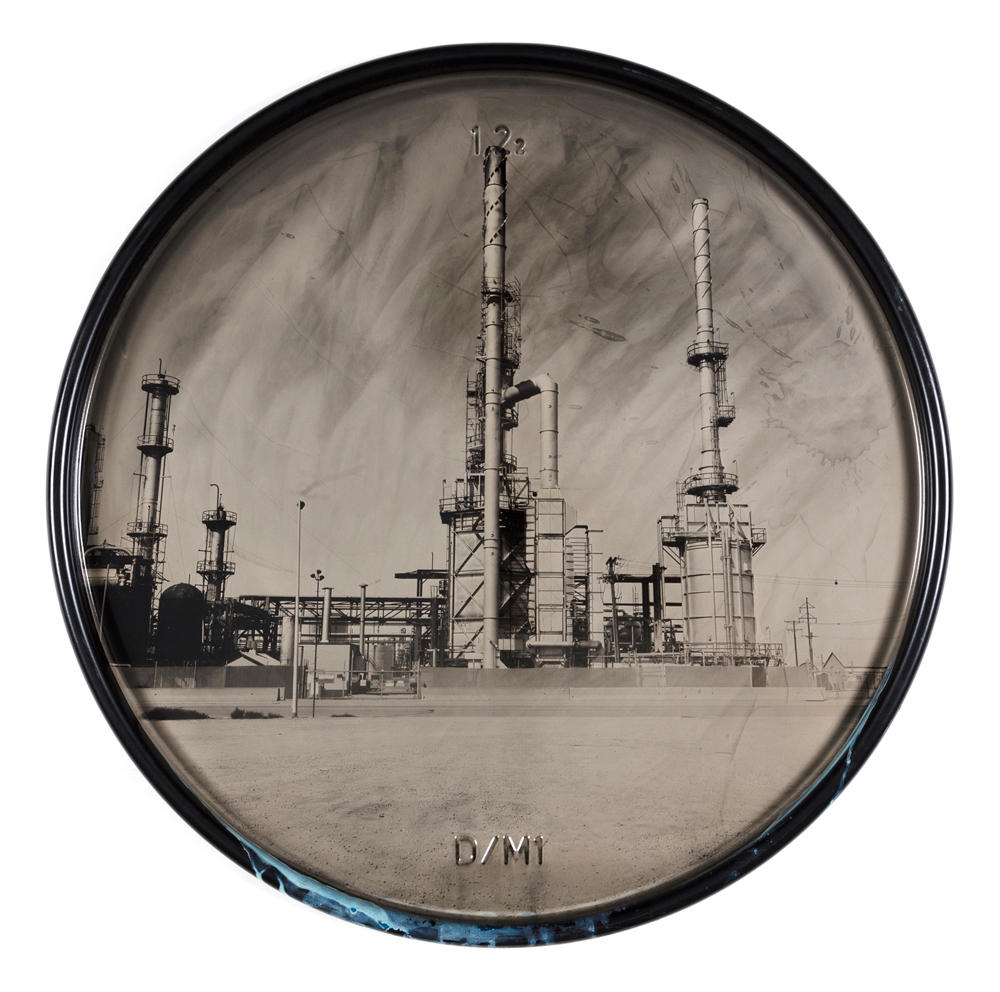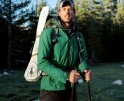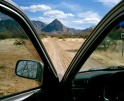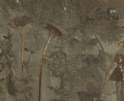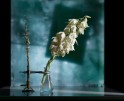David Emitt Adams: The States Project: Arizona
Arizona, the Grand Canyon State, is home to breathtaking landscapes and some of the richest colors ever seen. It is almost impossible to think of Arizona and not think of its scenic views. David Emitt Adams certainly understands the importance of landscape as he melds the American West onto aged metals by way of wet plate collodion processing. Metals that have been left behind and weathered some decades old. His body of work Conversations with History depicts the western landscape in a different way, creating bonds by way of time and material. We are excited to reel in David this week as our Arizona guest editor. Today we highlight his work and discuss old processes in a new context.
David Emitt Adams is an artist whose current practice engages historical media to create an informed contemporary dialogue about photography’s past and present. Born in Yuma, Arizona, David obtained his Bachelors of Fine Art from Bowling Green State University in 2002 and a Masters of Fine Arts from Arizona State University in 2012. His work is in the permanent collection of The Museum of Photographic Arts San Diego, Santa Barbara Museum of Art, The Center for Creative Photography, and numerous private collections. He has exhibited nationally and internationally including museum exhibitions at Wichita Art Museum, Santa Barbara Museum of Art, Phoenix Art Museum, and the Tucson Art Museum. David will be debuting his most recent series title Power in a solo exhibition opening at the Roswell Museum of Art in 2017.
Conversations with History
As long as people have been in the American West, they have found its barren desert landscapes to be ideal for dumping garbage and forgetting. I was born in Yuma, Arizona in 1980 and I have never known this landscape without the forgotten debris of urban sprawl. Today, the notion of land untouched by the hand of man is so foreign it might as well be make-believe.
The deserts of the West have special significance in the history of photography. By the time I became an adult I began to see that the Arizona desert was far different from the scenery once photographed by Timothy O’Sullivan in the 1860s. I have explored this landscape with an awareness of the photographers who have come before me, and this awareness has led me to pay close attention to the traces left behind by others.
I collect discarded cans from the desert floor, some more than four decades old, which have earned a deep reddish-brown, rusty coloration. This rich patina is the evidence of light and time, the two main components inherent in the very nature of photography. For this body of work, I manipulate these found objects through a labor-intensive 19th century photographic process known as wet-plate collodion. I create images on their surfaces that speak to human involvement with this landscape. The results are objects that have history as artifacts and hold images connected to their locations.
Describe what it is like to be an Arizona-based photographer.
I can’t speak for all Arizona photographers because the processes and concepts explored in the community are so diverse. In my experience Arizona’s photographers are influenced by the entirety of what exists here whether it is the place, people, or politics.
I see you were born in Arizona. What is your history with the state? Have you always been here, or are you always being pulled back?
I was born in Yuma, Arizona but my family moved every three years of my life. I have lived throughout the United States, Mexico City, Buenos Aries, Argentina and Jakarta, Indonesia. I did not consider coming back until 2008 when I began researching graduate schools. At that point in my life there were two photographers that I admired and wanted to learn from, Mark Klett was one of them. If Mark hadn’t been teaching at Arizona State University I would not have applied and I might have never come back to Arizona. Once I returned to Arizona and I started making work, I knew this was where I should be.
Other than specific interests about your practice, are there other reasons why Arizona is where you should be? Can you paint a picture about why you love the state?
Overarching beauty and natural wonders aside, I have a strong support system here. That is key for any artist anywhere. I am on the board of InFocus, which is the Phoenix Art Museum’s photography support group. The group provides educational opportunities for the Phoenix and Tucson communities through a multitude of programs ranging from exhibitions to artist lectures, and panel discussions. I often teach workshops at Art Intersection in Gilbert. They are an art incubator with a top of the line facilities including a digital lab, darkroom and historic process labs. The Etherton Gallery who represents my artwork is in Tucson. They are a world-class photography gallery that works tirelessly to make sure I can pay rent and that my career is advancing. Most importantly, I surround myself with people that inspire me. Arizona has a wide spectrum of really incredible artists.
Your practice speaks to older traditions of photography. Would you say there is a desire to apply a contemporary spin in such rooted ideas?
I love history. I had an amazing ancient history teacher in the 9th and 10th grade in Argentina, Mike Austin. He made ancient history a very visual experience. Since then, I have mined past for inspiration.
As for photography I sought out historic process that I could help articulate the complex relationships of contemporary issues in my work. What you see is a product of who I am, my history, surroundings, experiences, desires, and so on. Photography and it’s history are two major influences in my art. I use historical photographic processes because that is the technology that allows me to execute my vision in a way that is simultaneously present and retrospective.
Would you say that your work is a result of your geographical location?
I am definitely an artist that feeds off of my surroundings. Having traveled so much in my life, I tend to look for the things that make a place or time unique and focus on that.
In your work, there is an effort in creating permanence to a very ephemeral medium. I am curious to this concept of immortalizing the American landscape, specifically the West, something that is theoretically ever changing.
Permanence in photography is a hard concept for me to wrap my mind around. We as photographers would like to believe that the moments we capture are now permanent but they are not. Which is more ephemeral: the subject of my photograph or the medium that I print on? I would probably say they are one in the same. Its not my intention to preserve a certain notion of the American West but to show what I encounter while I am here. I like the intersection of photography and sculpture because it allows another level of experience. I can now give you a piece of this environment instead of just showing you a picture of it.
Are you currently working on any Arizona-based projects?
Conversations with History is ongoing and evolving. I am working towards an installation rather than a singular image/object. I am also making pieces that contain anywhere from three to fifty or more image/objects in a single artwork.
I also have a body of work that will be debuted in a solo exhibition at the Roswell Museum of Art, January 2017 titled Power. That is not an Arizona based project however. That work focuses on oil refineries, power plants, and the industrial environment surrounding these structures, it encompasses California and the Southern United States. The photographs for this project are realized as tintypes made in-camera directly on the lids of 55-gallon oil drums.
Finally, describe your perfect day.
Any day not in front of the computer.
Posts on Lenscratch may not be reproduced without the permission of the Lenscratch staff and the photographer.
Recommended
-
Michael Matthew Woodlee: The States Project: ArizonaSeptember 11th, 2016
-
Serge J-F. Levy: The States Project: ArizonaSeptember 10th, 2016
-
James Hajicek and Carol Panaro-Smith: The States Project: ArizonaSeptember 9th, 2016
-
Ryan Parra: The States Project: ArizonaSeptember 8th, 2016
-
Emily Matyas: The States Project: ArizonaSeptember 7th, 2016

